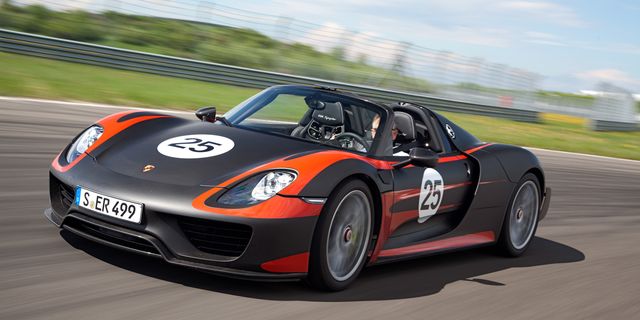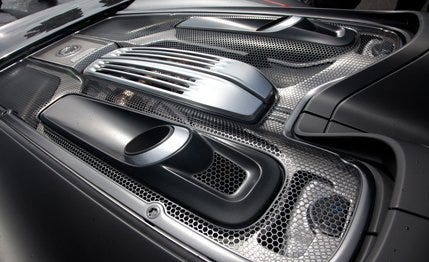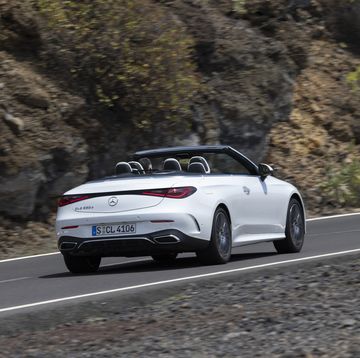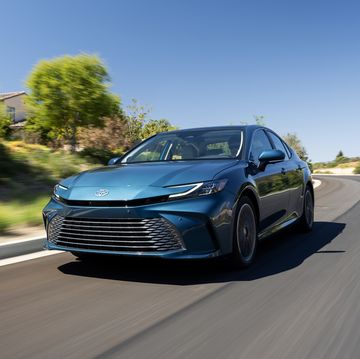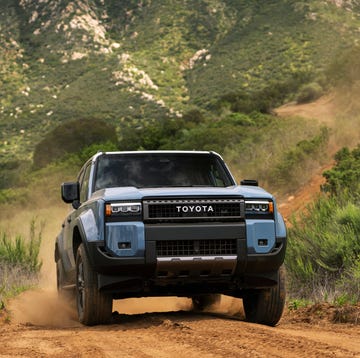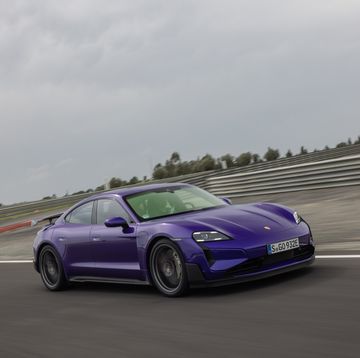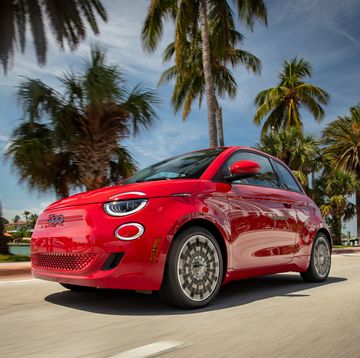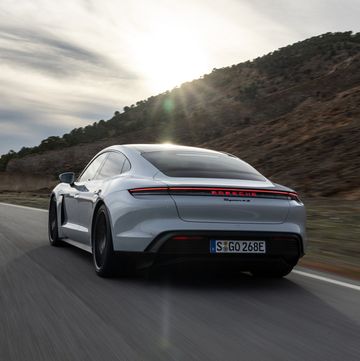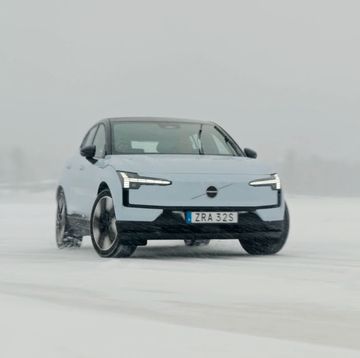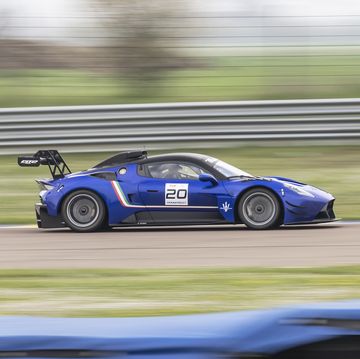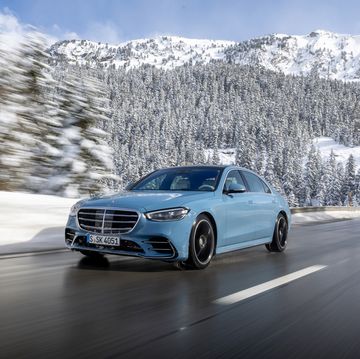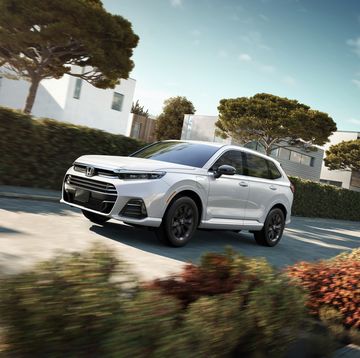The 918 Spyder might pay homage to Porsche’s illustrious past, but its real mission is redefining supercar possibilities. Smart use of advanced technology works to eliminate the traditional conflict between performance and efficiency. Faster, and theoretically more fuel stingy than any past Porsche, the 918 ventures beyond today’s expectations of hybrid technology to ensure that driving fun and extreme performance continue to thrive. This is the Porsche for the age of environmental responsibility.
Now that we’ve experienced nearly a dozen laps in both the driver’s and passenger’s seat at Porsche’s Leipzig test track, the 918’s soul is finally available for sharing. Here’s what you need to know about one of the quickest supercars we’ve ever driven.
You’ll never be able to pop open the hood on this exotic supercar. The 918 engineering team saved the weight of hinges, latches, and prop systems necessary with a conventional engine cover. And besides, opening the hood would reveal little more than the 608-hp, 4.6-liter V-8’s exhaust piping, voluminous catalytic converters, and colossal mufflers because the engine itself is buried deep in the chassis.
A 9000-rpm Manchine
What you can see are twin exhaust stacks aimed like antiaircraft cannons—they blast an audio mix that’s one part NASCAR and two parts Formula 1. Project leader Frank Walliser calls the 918 a “manchine,” in part because its engine wails all the way to the 9150-rpm fuel cutoff with soul-smacking conviction.
This race-bred powerplant descended from the championship-winning Porsche RS Spyder’s racing V-8. The salient features that take it to the outer limits of power per cubic inch include centrally located direct fuel injectors, variable intake- and exhaust-valve timing, finger-follower valve actuation with hydraulic lash control, forged titanium connecting rods, dry-sump lubrication, and a flat (180 degree) forged-steel crankshaft. The crank’s flat configuration enhances cylinder filling while adding wickedness to the exhaust note. There are no belt-driven accessories. A clutch between the V-8 and the centrally located 154-hp electric motor provides stop-start operation to eliminate fuel consumption in some operating modes.
This is the first-ever naturally aspirated engine with exhaust ports located in the valley (hot-V configuration). Turbocharging, a longstanding Porsche strength, was not employed here because two electric propulsion motors provide ample torque at the low end of the rev range, freeing the engine tuners to strive for spectacular high-rpm power.
There are three clutches and seven forward gears but not a clutch pedal or an H-pattern in sight. With two masters to serve—speed and fuel efficiency—technology has moved past the conventional manual transmission Porsche used so satisfyingly in the 2004 Carrera GT. Versus the previous supercar’s, today’s dual-clutch seven-speed provides a 37-percent-greater ratio spread, no interruption of power delivery during upshifts, and faultless operation that doesn’t depend on a skilled driver. In simple terms, the dual-clutch way is quicker and significantly more fuel efficient. The driver gets shift paddles to play with and a dash toggle (park, neutral, drive, reverse) that looks suspiciously like a Toyota Prius’s shifter.
The 918 shares three gear ratios and the basic layout of the 911 Carrera’s PDK transaxle. To suit this mid-engine layout and to lower the height of the engine and its electric-motor teammate, the gearbox is rotated 180 degrees about two axes—vertical and horizontal—versus the 911’s orientation. As a result, the center of gravity is approximately 14 inches, five inches lower than in the current 911 Carrera.
Inconel Pipes Meet Ceramic Balls
Minimizing weight through the use of exotic materials is the best means of maximizing performance and fuel efficiency without compromise. Toward that end, the 918’s structural core is a resin-injection-molded passenger tub bolted to a composite space frame that surrounds and supports the engine, transaxle, and rear suspension. Supplementing the mostly carbon-fiber structure and body panels, the brake rotors are carbon ceramic, the optional wheels are forged magnesium, the exhaust system is Inconel (a nickel-based alloy containing chromium, iron, and other elements), and the fuel tank is super-formed aluminum. The engineering team chased every gram, resorting to ceramic balls to trim 18 ounces from the optional Weissach package’s wheel bearings.
Porsche claims the 918 weighs 3616–3715 pounds. That’s light only when you account for the mass of two electric motors, copper wiring, a substantial battery pack, and the second differential needed to provide on-demand all-wheel drive. In the interests of agility, the heavy parts are located unusually low in the chassis, yielding a center of gravity barely higher than the wheel centers, and a front-to-rear power distribution of 57/43 percent.
